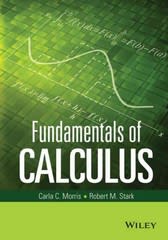Question
A hospital in-outpatient center is worried about the length of stay, measured in days, of its patients who undergo joint-replacement procedures. To this end, it
A hospital in-outpatient center is worried about the length of stay, measured in days, of its patients who undergo joint-replacement procedures.
To this end, it has asked you to compare the length of stay of patients who received a ceramic implant (coded as 1 in the predictor variable Ceramic) to the length of stay of patients who received a conventional implant (coded as 0 in the predictor variable Ceramic).
After drawing a small random sample of the patients who received a joint replacement at this medical center, you ran the following regression model:
| Length of Stay | Coefficients | Standard Error | t Stat | P-value | Lower 95% | Upper 95% |
| Intercept | 4.34 | 0.25 | 17.35 | 0.00 | 3.85 | 4.83 |
| Ceramic | -0.81 | 0.26 | -3.07 | 0.00 | -1.33 | -0.29 |
1.
Use the regression results from the table shown above to write out the estimated equation.
2.
What does the number 4.34 in the Coefficients column measure?
3.
What does the number -0.81 in the Coefficients column measure?
4.
Was there a difference in predicted length of stay between the two groupsin the small random sampleof the patients who received a joint replacement at this medical center?
That is, was the estimated coefficient of Ceramic different from zeronumerically?
Explain your answer.
5.
At a 5% level of statistical significance, do you infer that there was a difference in length of stay between the two groupsin the population of all patientswho received a joint replacement at this medical center?
That is, was the estimated coefficient of Ceramic different from zerostatistically?
Explain your answer.
6.
Compute the predicted length of stay if 60% of patients receive a ceramic implant.
7.
Compute the change in predicted length of stay when the percentage of patients receiving a ceramic implant increases from 60% to 100%.
Now you add three more predictor variables to the regression model:
- Elective was 1 if the procedure was elective and 0 if it was emergent.
- Age was measured in years.
- Mortality Risk was coded as 0 low, 1 moderate, 2 high, 3 very high.
| Length of Stay | Coefficients | Standard Error | t Stat | P-value | Lower 95% | Upper 95% |
| Intercept | 5.79 | 0.65 | 8.95 | 0.00 | 4.52 | 7.06 |
| Ceramic | -0.41 | 0.25 | -1.60 | 0.11 | -0.90 | 0.09 |
| Elective | -1.07 | 0.27 | -3.97 | 0.00 | -1.60 | -0.54 |
| Age | -0.02 | 0.01 | -2.17 | 0.03 | -0.03 | 0.00 |
| Mortality Risk | 0.89 | 0.13 | 6.70 | 0.00 | 0.63 | 1.16 |
8.
Use the regression results from the table shown above to write out the estimated equation.
9.
What does the number -0.41 in the Coefficients column measure? Why is this number different than the estimated coefficient of Ceramic shown in the first regression table, -0.81?
10.
Does the substantive strength of the association between receipt of a ceramic implant and length of stay increase, stay the same, or decrease when we hold constant the nature of the procedure (elective or emergent), the patient's age, and the patient's mortality risk? Explain your answer.
11.
Does the statistical strength of the association between receipt of a ceramic implant and length of stay increase, stay the same, or decrease when we hold constant the nature of the procedure (elective or emergent), the patient's age, and the patient's mortality risk? Explain your answer.
12.a.
Compute the predicted value of length of stay if 60% of patients receive a ceramic implant. Assume that 37% of patients are admitted on an elective basis, that their mean age 71 years, and that the average mortality risk is 1.3.
12.b.
Compute the change in predicted length of stay when the percentage of patients receiving a ceramic implant increases from 60% to 100%. Assume that the share of patients who were admitted on an elective basis as well as the average age and average mortality risk remain unchanged as specified in 12.a.
Suppose now that you have built six different prediction models of length of stay, labeled A through F. The Cleveland dot plot below shows the test root mean squared error (test RMSE) for each model.

Step by Step Solution
There are 3 Steps involved in it
Step: 1

Get Instant Access to Expert-Tailored Solutions
See step-by-step solutions with expert insights and AI powered tools for academic success
Step: 2

Step: 3

Ace Your Homework with AI
Get the answers you need in no time with our AI-driven, step-by-step assistance
Get Started


